I know, I know, it’s only the third one of these I’ve written so a bit soon for a special edition, except: summer is here!
I live just outside of Madison, Wisconsin, so your seasonal overlap is going to vary quite a bit from mine unless you too thrive in a subarctic USDA Hardiness Zone 5a where it is, somewhat literally, winter at least seven months of the year. This is to say, if you’ve been immersed in summer for weeks (months? always?) now, good for you. I am of the belief that we must celebrate summer when we glimpse it even briefly, because we’re not quite sure if it’s actually going to arrive to begin with, nor how long it will stay.
Housekeeping: This is long, so most email clients will truncate this message (Gmail users: this means you). I don’t plan on sending lists this long but once in awhile. You can read the whole thing by scrolling to the bottom and clicking “view in browser.”
One last thing: since my missive last week, I discovered the mother of all resources for diversifying your children’s library: The 2020 Ultimate List of Diverse Children’s Books from Here Wee Read. It features diversity of every kind and is ultimate in every way. If you only want to deal with one list, make it this one.
NOW FOR SUMMER.
*I don’t even like summer
Flower Garden by Eve Bunting, illustrated by Kathryn Hewitt (1994)
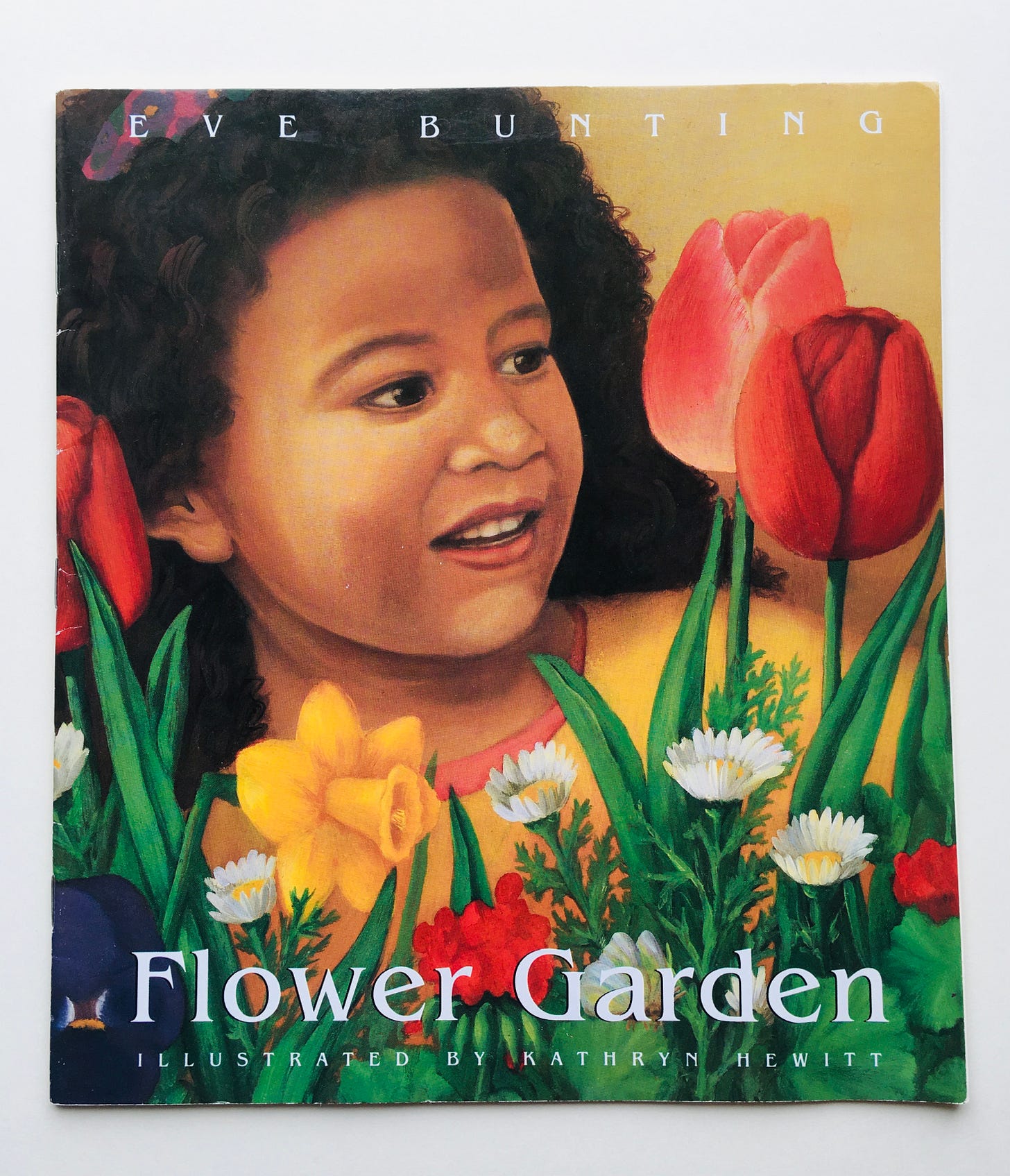
Kathryn Hewitt’s illustrations are the perfect accompaniment to this warmhearted story of a girl and her father preparing for and planting a window garden — a task that takes them most of the day, but one that’s worth it when her mother walks in to the special birthday surprise. Eve Bunting is so dang good, I often buy her titles without even reading them first, but this one has a deeply thoughtful and neighborly tone that makes it stand out even in an already stand-out career. My kids ask for this on repeat every spring.
Whose Garden Is It? by Mary Ann Hoberman, illustrated by Jane Dyer (2004)

No one can agree: whose garden is it? The human gardener thinks it’s only his, of course. But rabbit, woodchuck, bird, worm, a smorgasbord of insects and underground animals and a slimy chorus chime in to disagree. I love that even the plants speak — so too the soil and the tree and the sun and the rain — showing all the elements and beings that make up the world as well as the beauty and bounty of the garden. By the end we know the gardener, who still hasn’t recognized the abundance of life all around him, is just one contributor, and that no one can make a garden alone.
Inch by Inch: The Garden Song by David Mallett, illustrated by Ora Eita (1975)
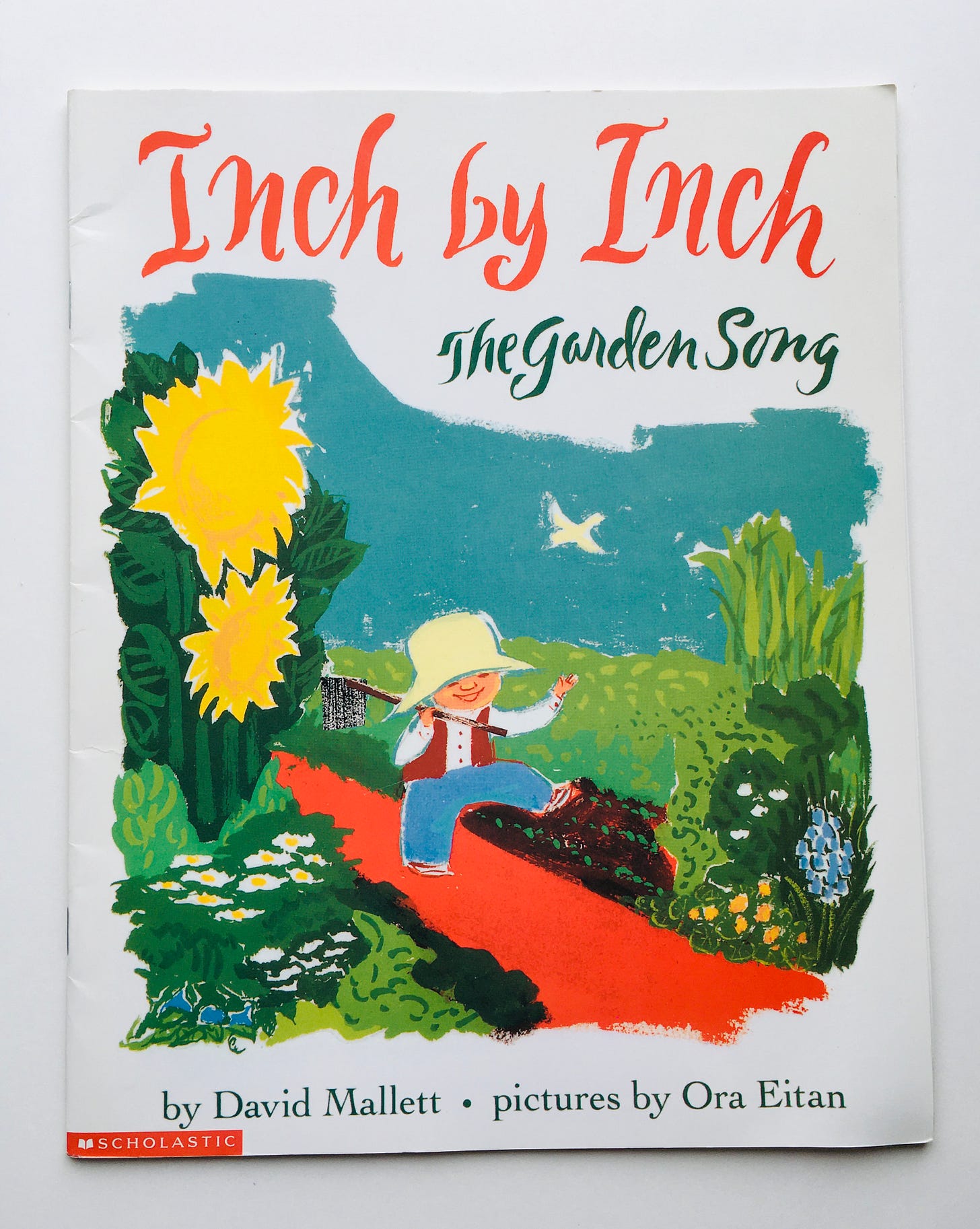
Bonus points always if you actually sing a singing book out loud (this pleases my children to no end), and this is a delightful one extolling the satisfaction and joy of tending a garden. Eitan’s illustrations show a child cheerfully working hard while also praying and daydreaming — “Pullin’ weeds and pickin’ stones, we are made of dreams and bones” — and doing a little growing of their own. The ultimate Earth Day book, really, it’s no surprise many folk singers have covered this song (look up Pete Seeger’s or John Denver’s versions, though my favorite is from Maria Muldaur). You don’t have to sing it, but it’s so much better if you do.
Rain Talk by Mary Serfozo, illustrated by Keiko Narahashi (1990)

From the very first word — “ploomp” — this book is a sensory portrait of a warm summer rain. Full of onomatopoeia and rich descriptions, we follow a little girl as she goes about her day outside, playing in the rain and listening to the many, varied sounds it brings. Eventually we join her inside where, snuggled up on her mother’s lap, she stays connected to the rain as it lands on her roof and windowpanes. This is a book full of the simplest wonder that not only reminds us what rain is but also serves to do what rain does: wash our perspective clean.
Summer by Gerda Muller (2005)
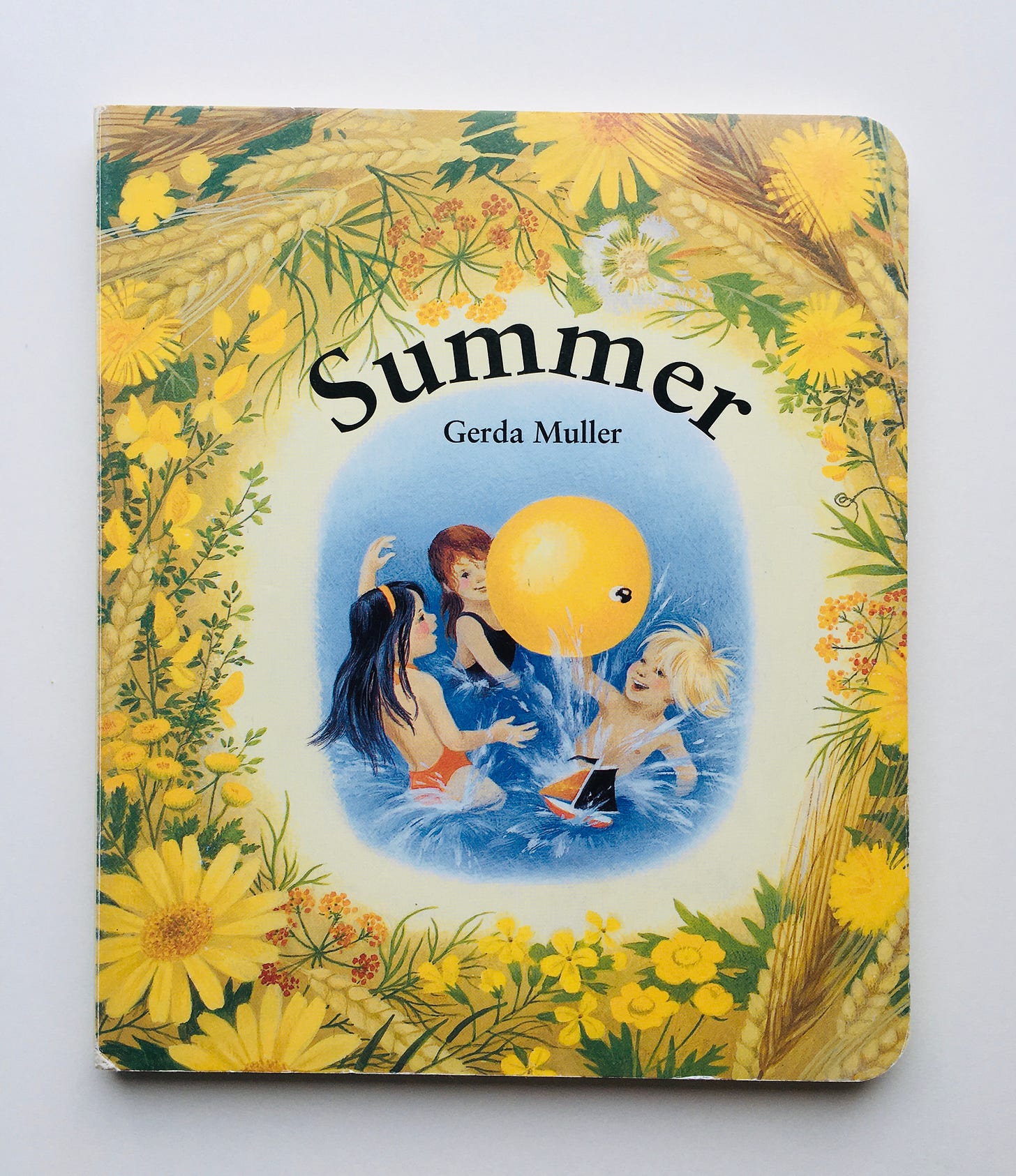
I’m not a huge fan of wordless books (I’m sure there’s something I’m missing, so I’m working on it) but Gerda Muller’s seasonal books are the major exception for me. Illustrated with the types of scenes and details that children can pore over for a long time, they radiant both innocence and fun. These books are absolute perfection for toddlers (and make wonderful gifts for that age group) but I’ve found, to my surprise, that they have enduring appeal far beyond what I would have guessed. If you enjoy Summer, don’t hesitate to seek out Spring, Fall, and Winter. They are each as good as the last.
Summer Days and Nights by Wong Herbert Yee (2012)
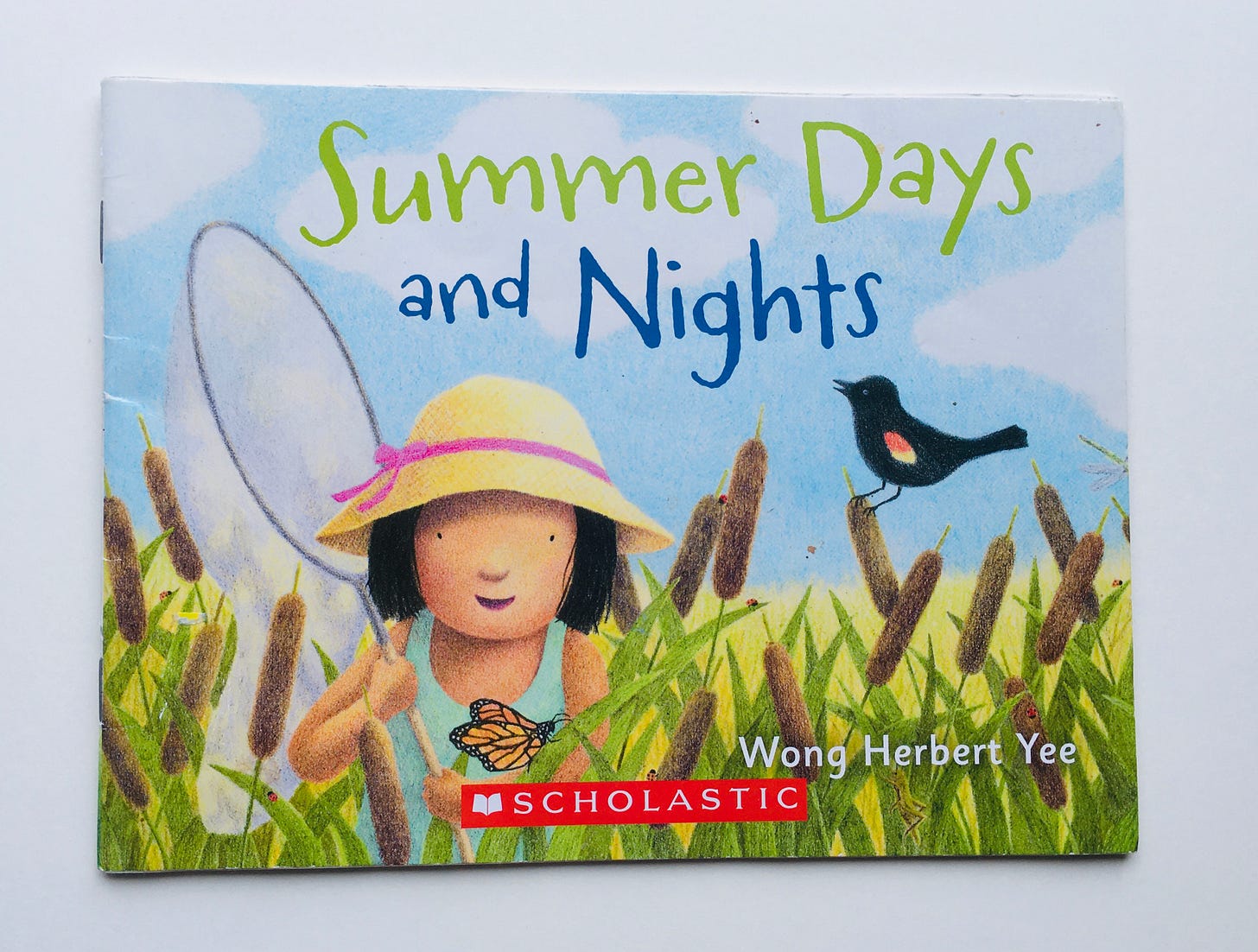
Part of a seasonal series starring the same nameless little girl (my favorite is Tracks in the Snow), this title begins at daybreak and ends after the moon is up. In between we trek with her through yard and nature beyond, exploring all the little things that delight children during a long and satisfying summer day. Though the text only ever refers to the girl’s experience, the illustrations show her parents right there alongside her, and the feeling of togetherness makes this a continually warm and endearing title.
Nicholas Cricket by Joyce Maxner, illustrated by William Joyce (1989)
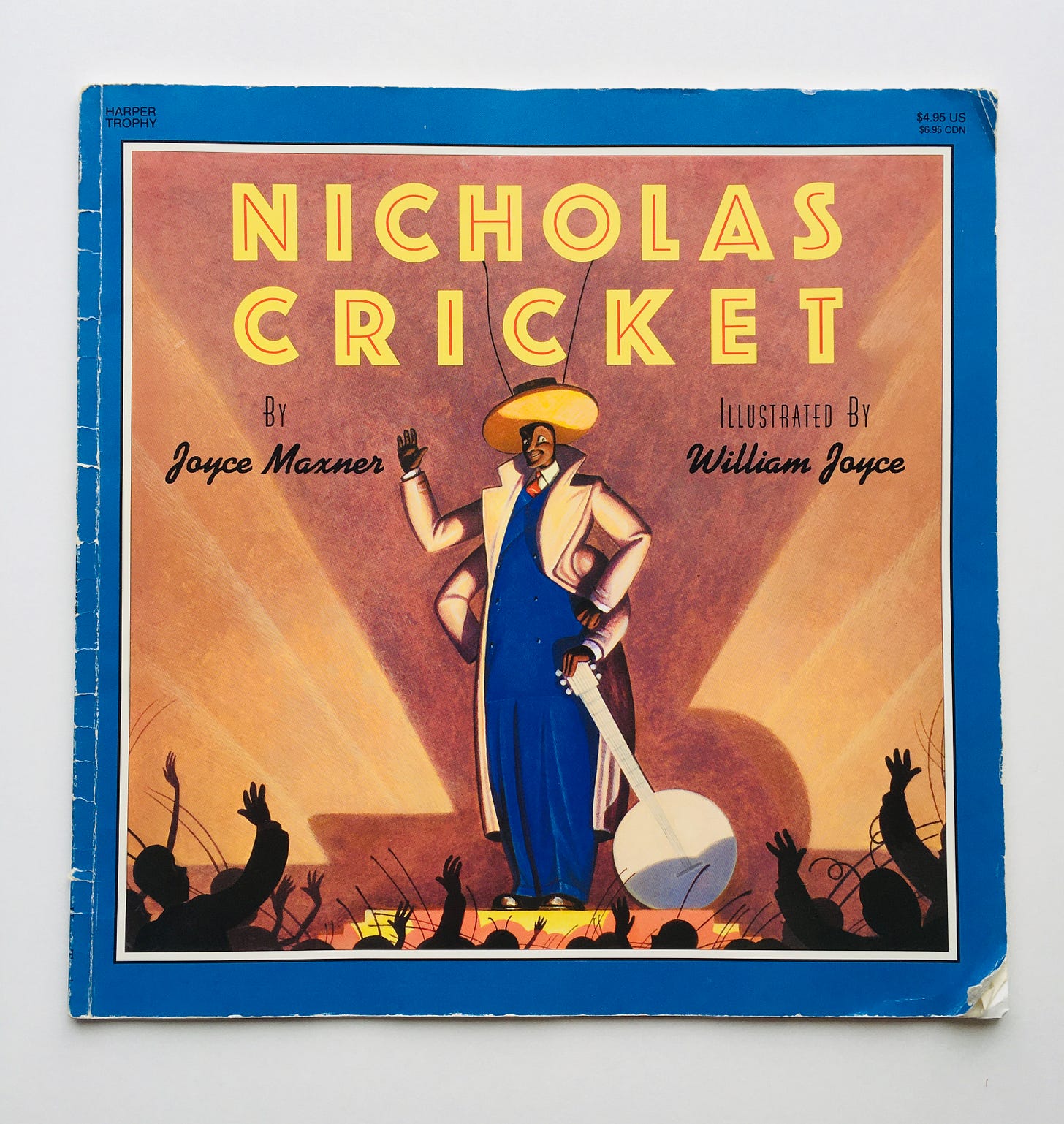
Occasionally on hot summer nights I will spontaneously shout at my children, “Listen! It’s the Bug-a-Wug Cricket Band!” and they will side-eye me (this look already honed to perfection even at six and three). But I cannot help myself: this book is so beautifully musical, the language so richly evocative of the noises of a summer night. Nicholas Cricket is the lead banjo picker in a hopping insect orchestra that plays to the hilt on a night of glowing moonlight and delicate summer wind. “Ladybugs strut and toads sashay, moths and mantises wing their way, snap-turtles swing and grasshoppers sway while Nick and the crickets just play and play.” It’s absolute poetry with pictures. So I really can’t help myself.
Anna’s Garden Songs by Mary Q. Steele, illustrated Lena Anderson (1989)
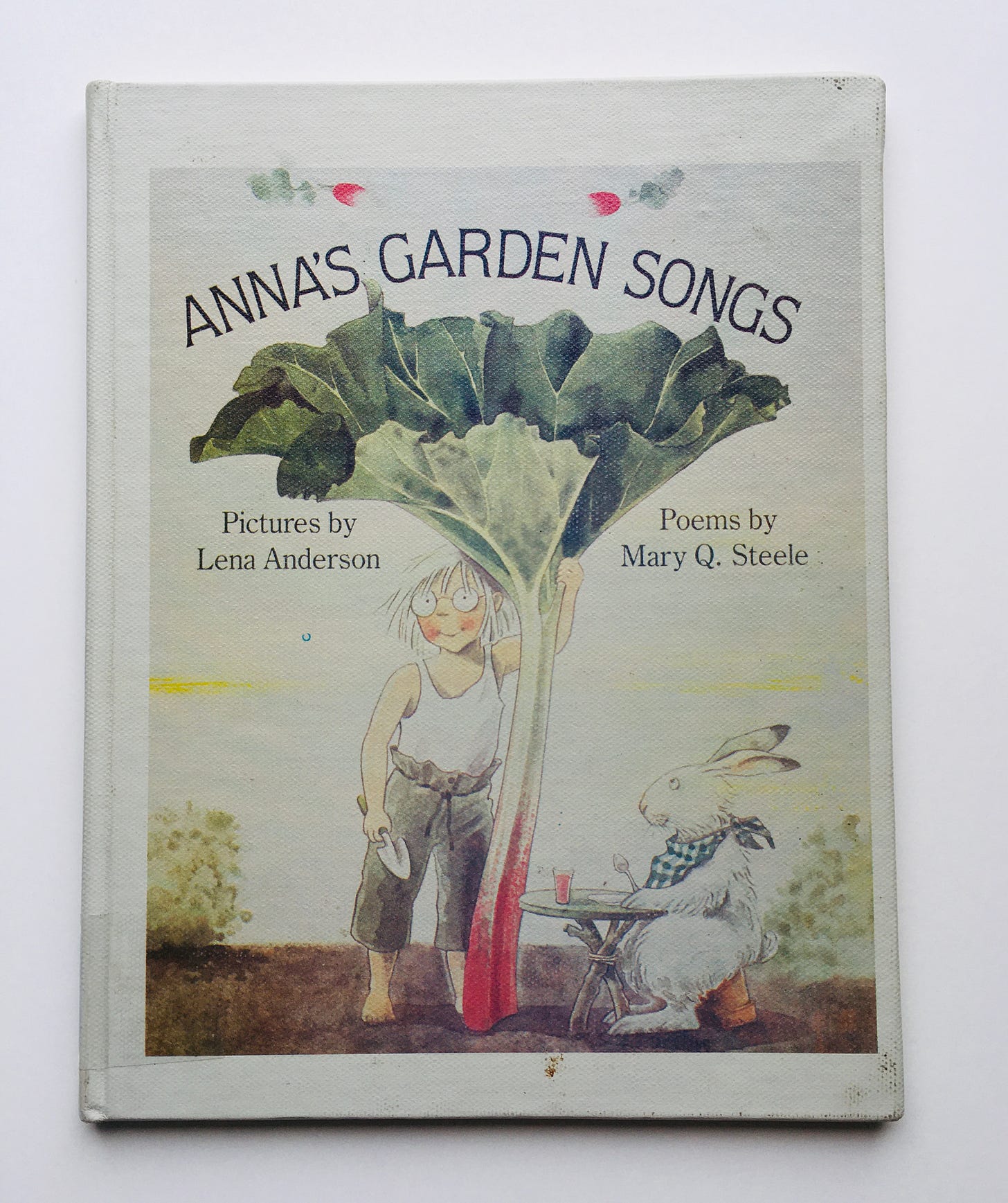
14 poems, each dedicated to a particular vegetable, these are sweet, funny, and oh-so-summery little snippets to share one at a time or devour whole. Steele’s writing is rhythmic and easy for even the littlest ones to enjoy, but the real nourishment here is Anderson’s adorable illustrations of Anna, whose sparky personality and genuine love of gardening feed the reader, as all good books should.
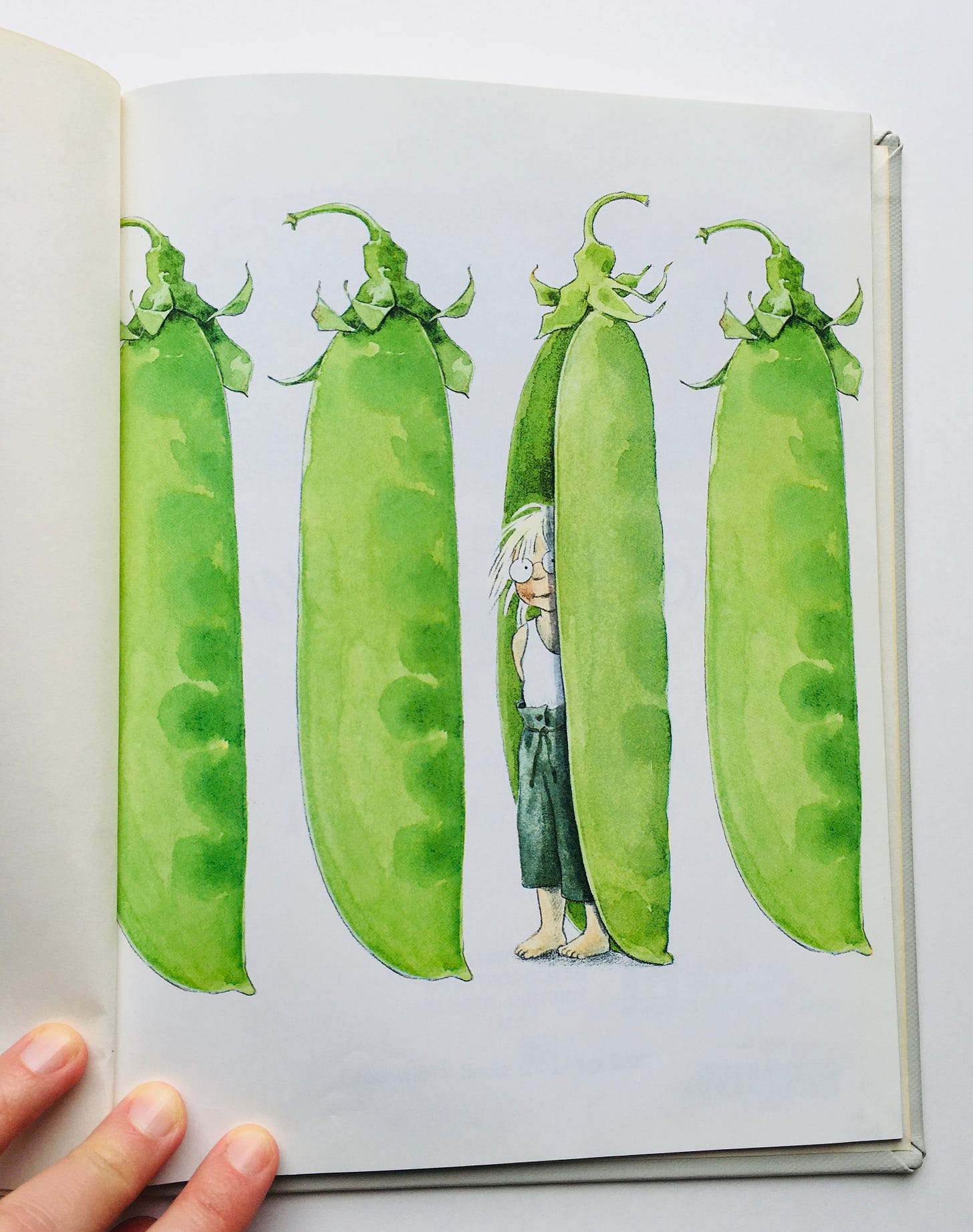
Plants Feed Me by Lizzy Rockwell

Speaking of feeding the reader… following in the footsteps of her parents, Anne and Harlow Rockwell, who wrote and illustrated many wonderful books together (some of which I will be talking about in later editions of this newsletter), Lizzy has upheld the family tradition of solidly enjoyable nonfiction books. As a family the Rockwells have produced a body of work that includes concept books and original stories, but it’s their repertoire of titles that focus on the regular items and events of everyday life (The Toolbox, My Spring Robin, Library Day, The First Snowfall) that are their best and strongest. Plants Feed Me is, in essence, and informative text (about the food to be had in gardens and nature), but an extremely well-executed one, and — dare I say — I think Lizzy’s illustrations might be just a touch better than her father’s.
Summer Story by Jill Barklem (1980)
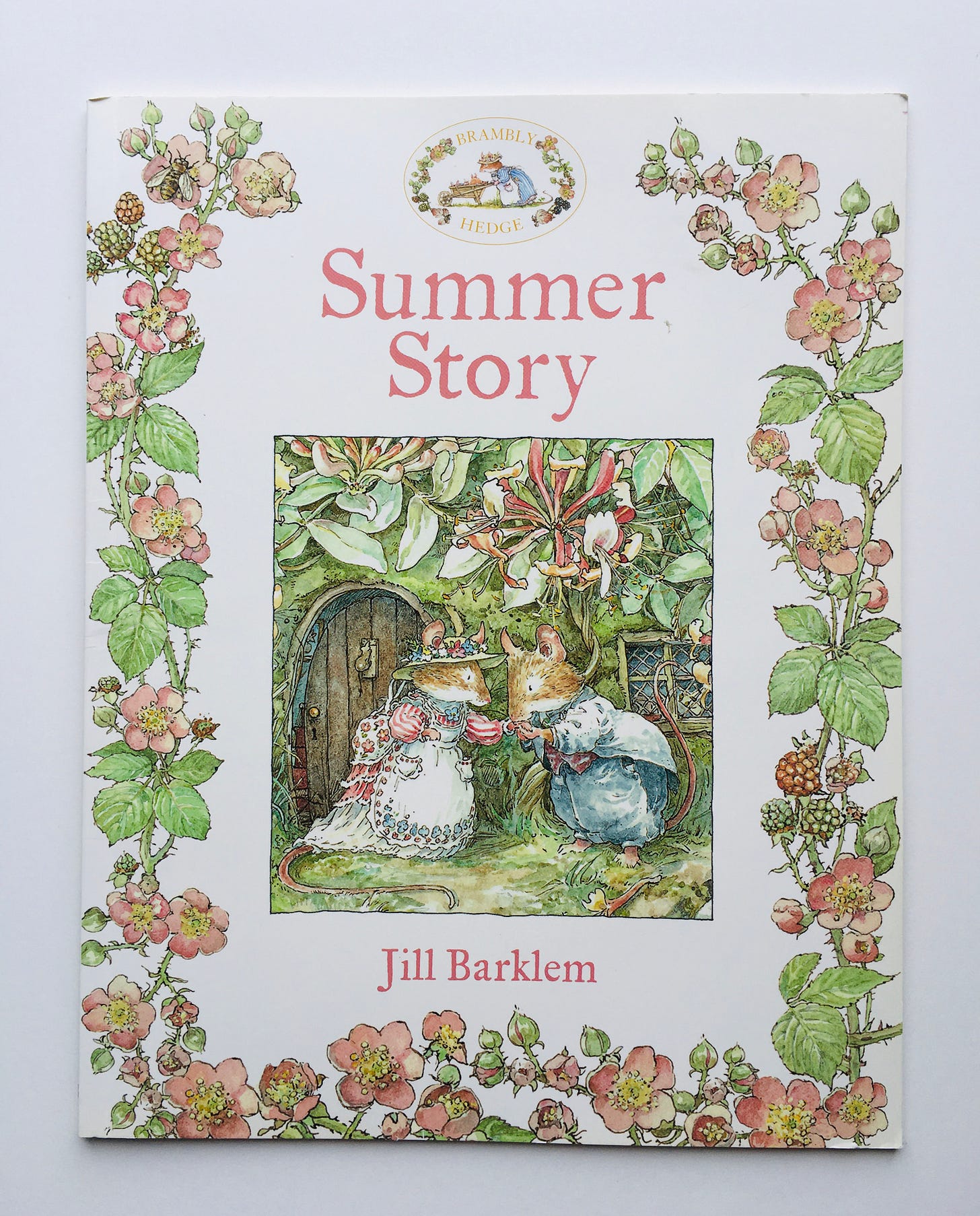
If you don’t know the Brambly Hedge books, close this email right now and get thee to an open browser window to order them, if not in full then at least the seasonal ones (boxed together they’re called A Year in Brambly Hedge). Barklem spent five years researching mice and all manner of hedgerow life before she began writing about the lives and sweet dramas of the residents of Brambly Hedge, and that research along with her absolutely impeccable attention to detail make her books a pure delight from beginning to end. Summer Story is no different — Poppy Eyebright and Dusty Dogwood become engaged and everyone works feverishly to prepare for the Midsummer’s Day wedding, which results— this is not a spoiler alert because nothing bad ever lasts in Brambly Hedge — in the most charming and flower-filled happily ever after.
Also? Barklem’s insanely detailed illustrations and cross-sections of all manner of mouselife are worth the price of any of her titles even without the lovely stories to go along with them. See for yourself.
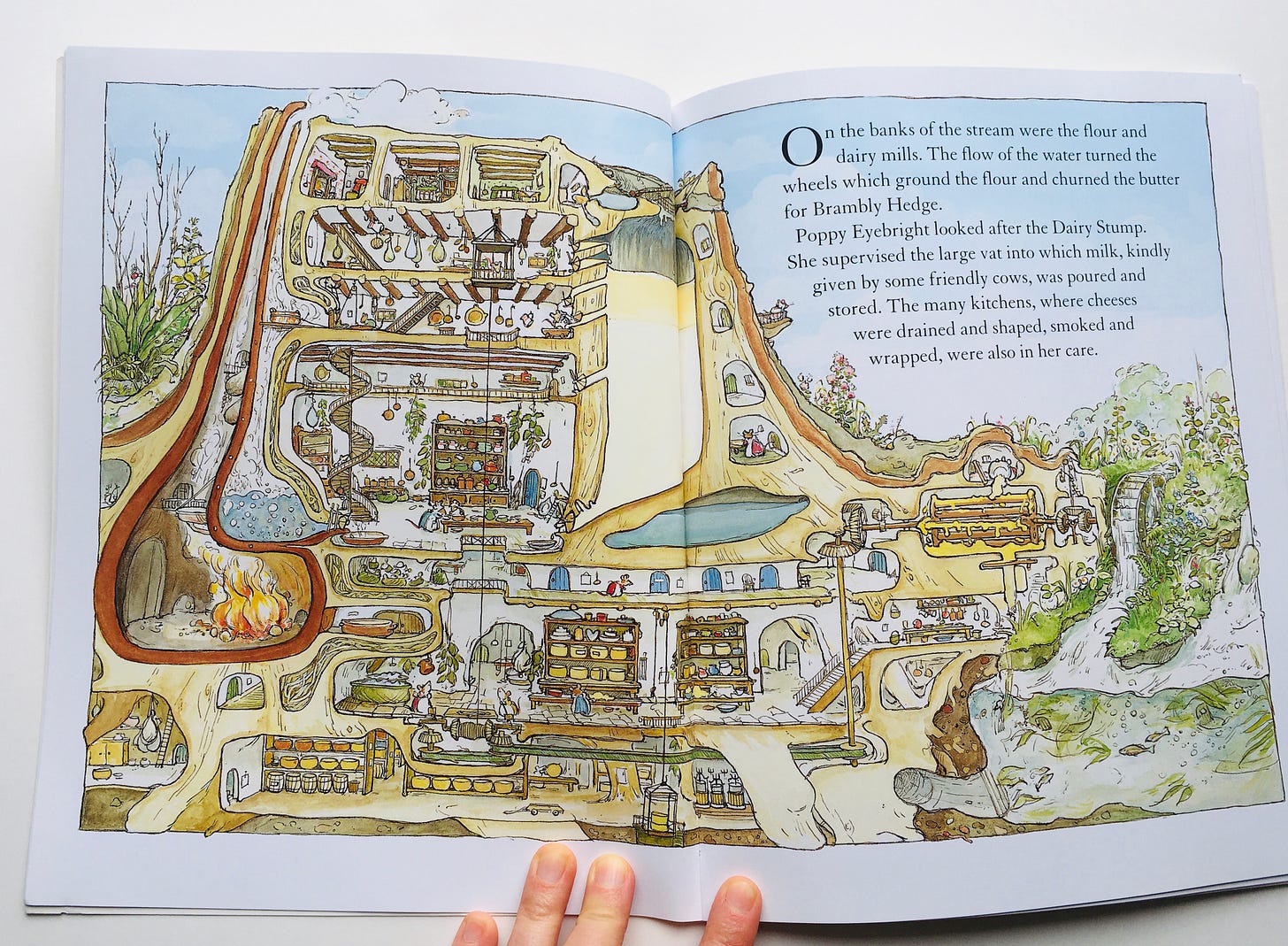
And even though it’s an adult book, and even though I promised myself I wouldn’t mention adult books in this newsletter (like that was really going to happen, Sarah): if you want an excellent summer read, you can’t go wrong with The Summer Book by Tove Jansson. It’s spare — really, nothing happens — but it’s as distilled as sunlight and and just as welcome.
HAPPY SUMMER! 🌞
If you like this list or find it of value, please consider forwarding this post to a friend 👇🏻 or sending them the link to subscribe. (Thank you!)



